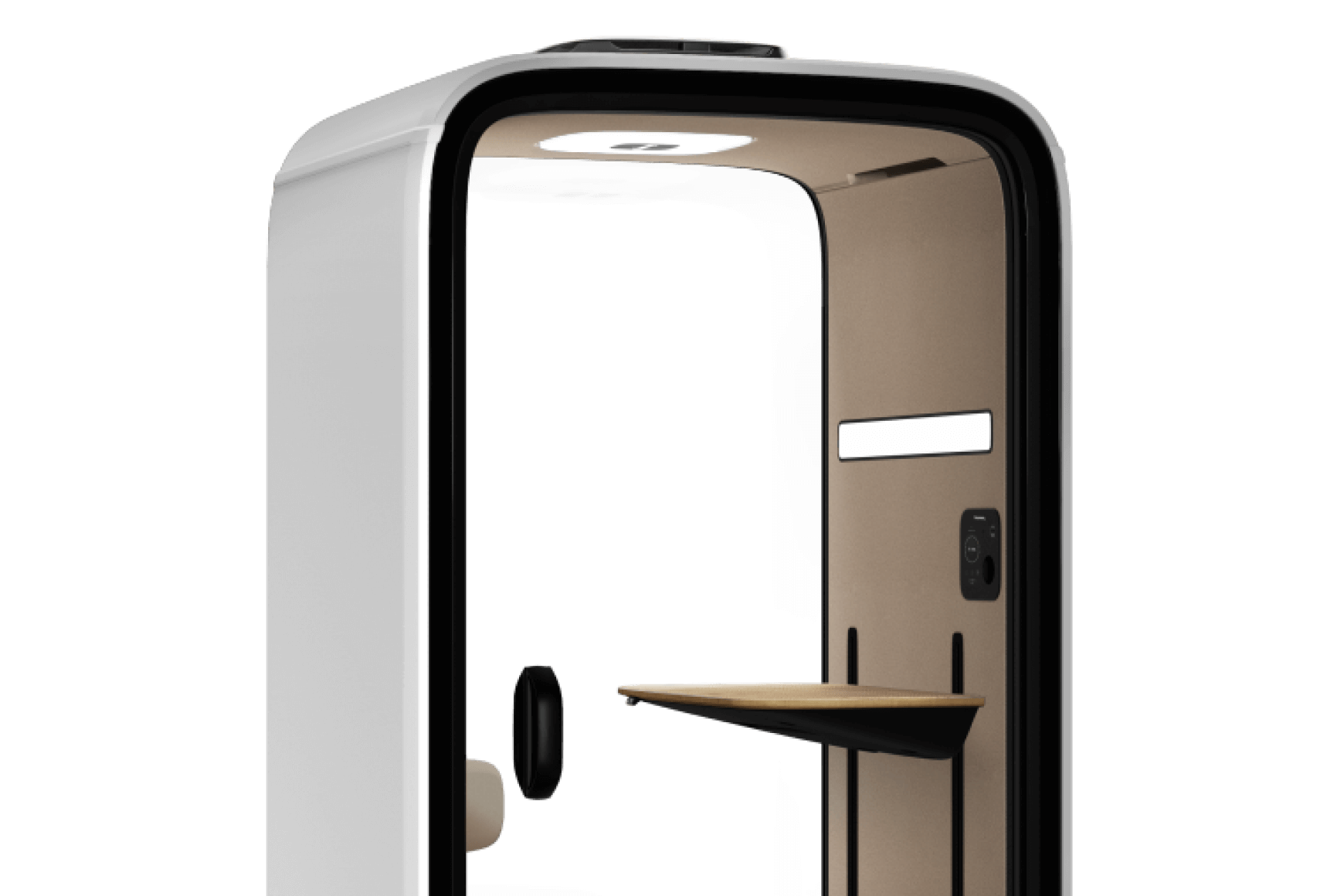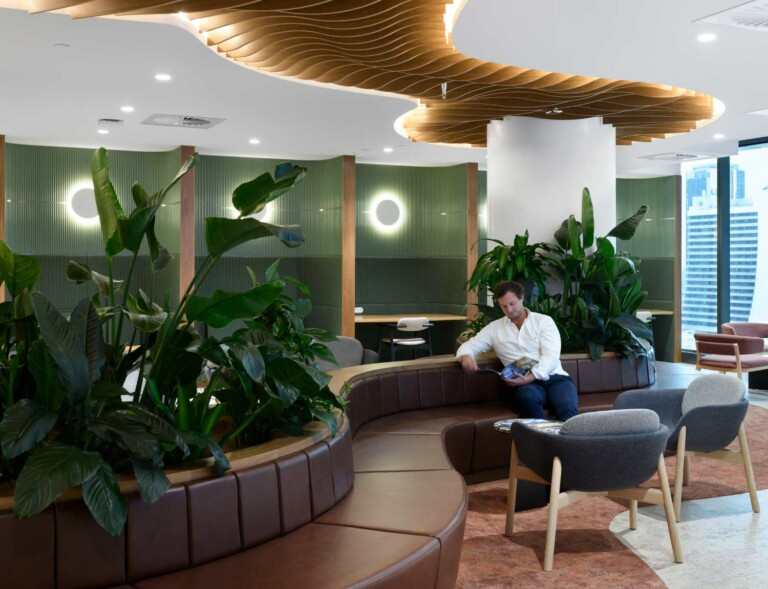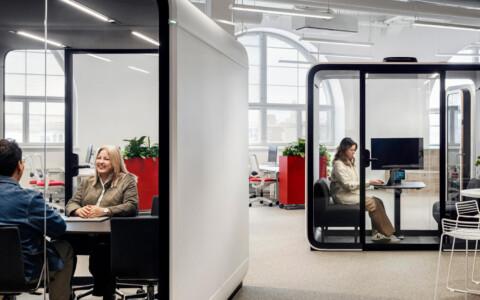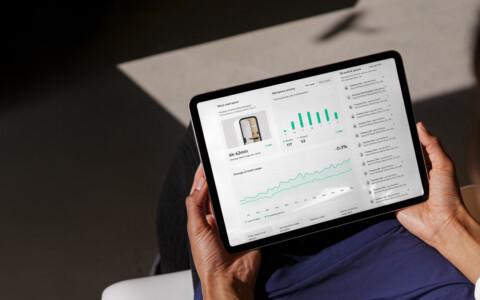Offices need more focus space. The working landscape is undergoing a profound transformation, and new ways of working are redefining the expectations for a supportive office. According to data from Leesman, the contemporary home environment remarkably outshines the traditional office in catering to the evolving demands of work.
To understand the changing needs, it’s important to investigate the evolving nature of work. With routine tasks transitioning to AI, more roles prioritize critical and creative thinking. This change requires workspaces that support this shifting trend – emphasizing the need for more areas dedicated to focus and concentration
What is a Focus Space?
Focus spaces are intended for tasks that demand intense focus, critical thinking, and minimal distractions. These spaces actively reduce office noise and subconsciously encourage the user to focus. And these dedicated spaces must be equipped with features that promote concentration, such as soundproofing, comfortable seating, adjustable lighting, and ergonomic furniture.
Focus spaces are essential in modern workplaces, as they offer employees a refuge from the potential disruptions of open-plan offices or shared workspaces. By providing focus spaces, organizations aim to enhance productivity and support employees in tasks that require uninterrupted attention.
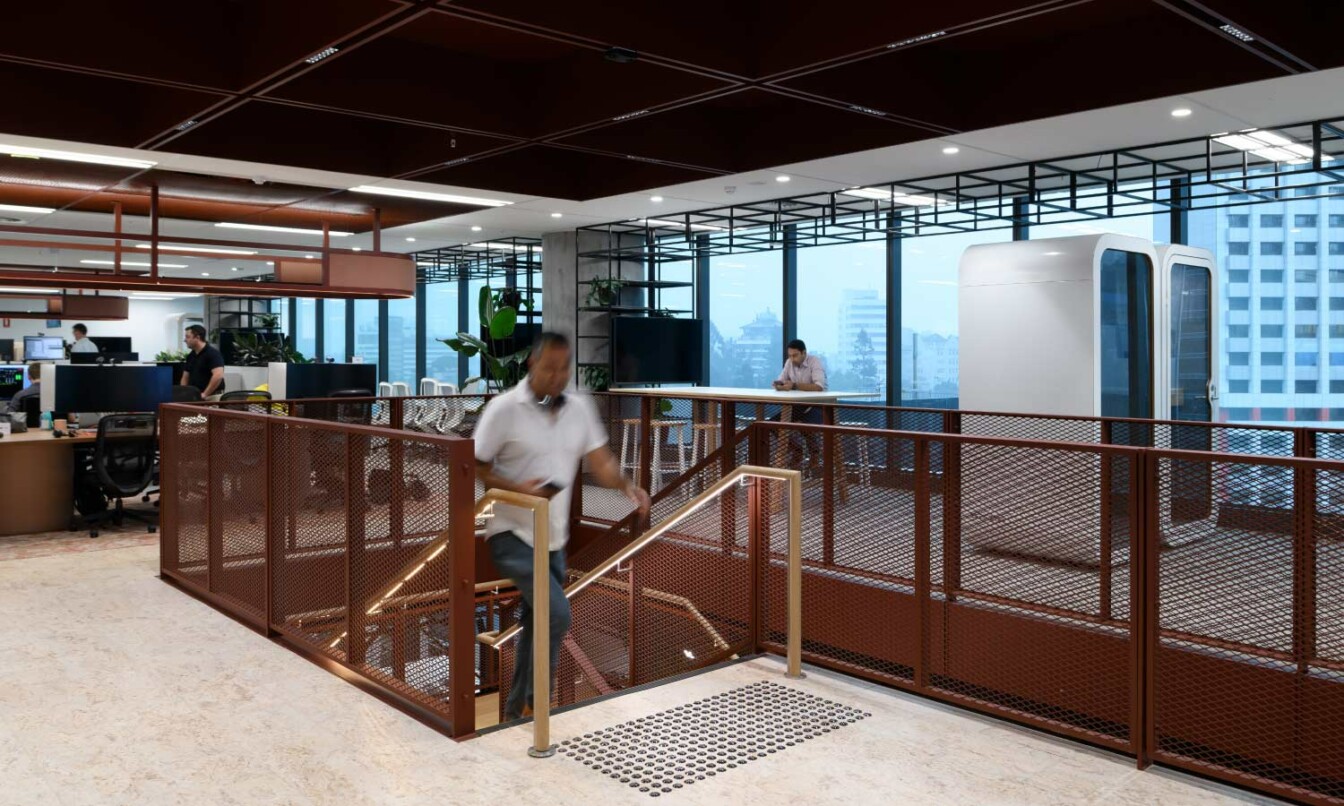
Why Offices Need More Focus Spaces
The past two years have been the time of upgrading offices to provide a “purpose” for coming to the office. Many companies are turning to enhanced bistros, communal events, and other gimmicks to draw their people back.
But employees increasingly want more private spaces to focus and get work done while working at the office. Many organizations make the mistake of focusing on “pull factors” like bistros and ping pong tables, instead of addressing the “push” factors like lack of focus space.
Here are five reasons why focus spaces will be the most important office design trend of 2024.
Bringing People Back
Soundproof pods and other focus spaces are an enticing reason to return to the office. Problems with the traditional open plan office have been supercharged by the pandemic, causing a dramatic increase in video conferencing and hybrid working.
In fact, focus spaces are the number one perk for increased visits back to the office. Research by CBRE shows the most desired factor for more visits to the office are focus spaces. Providing a place to join video calls, take virtual meetings, and work in private is crucial for modern work.

Improving Collaboration
Collaboration is an important factor for companies’ success – and working together on-site at the office helps foster teamwork and collaboration. According to a 2022 Dialpad survey, a majority of workers spend a third of their week in meetings. Focus spaces in the office provide a space for people to meet and work together without disturbing those around them.
While collaboration accounts for 10% of the workday, an additional 70% consists of focused work. Providing dedicated spaces for collaboration is imperative, but offices still need to strike a balance to accommodate the bulk of focused work. And while conference rooms play a key part of collaboration, they do not provide private space for focused work.
Supporting Neurodiversity
While the office environment has evolved drastically over the last century, the evolution of inclusive design has lacked in progress. An inclusive office caters to the diverse needs of its employees by providing focus spaces.
Designing spaces to support neuroinclusion is essentially designing for everyone. Workers with ADHD, dyslexia, autism and other neurodifferences make up around 15-20% of the workforce.
And focus spaces like soundproof pods provide spaces for every type of worker to work in the ways that they work best.
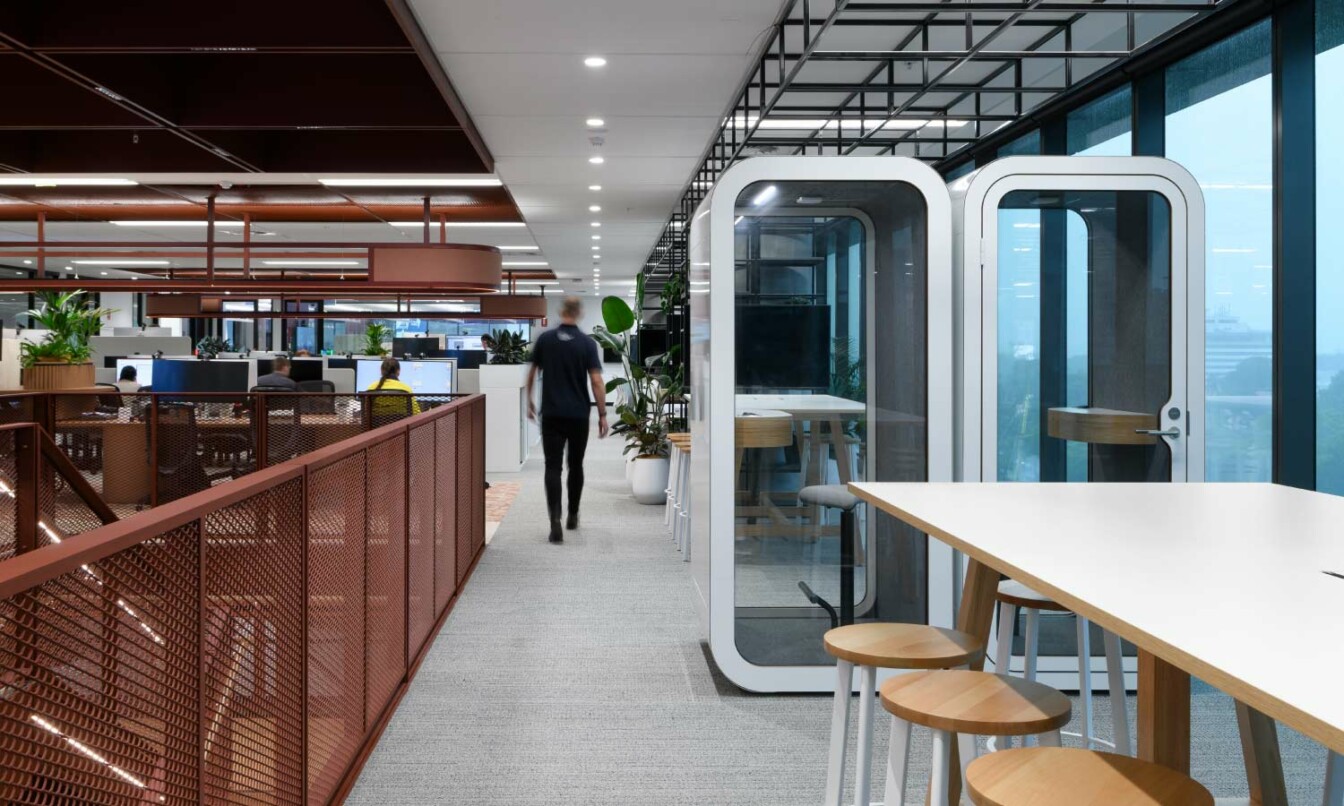
Removing Unwanted Stimulus
Noise is not the only stressor for the brain – our brain is wired to constantly monitor sounds, movements, and all sorts of external stimuli. If the brain detects something sudden, it sends an alarm signal that something is happening – even if the stimulus is harmless. This constant monitoring can leave the brain feeling exhausted and overworked.
Being isolated can provide peace of mind, reduce stress, and enable focus. To get employees excited about working at the office, employers must invest in real high-quality sound insulation, as well as physical spaces of separation.
Reducing Stress
Open-plan office noise has been linked to increased stress and negative moods. Bond University found a causal relationship between open-plan office noise and both stress and negative mood. Negative moods increased by 25% and sweat response by 34%. And a Gallup poll from June showed workers are stressed and disengaged in record numbers.
Well-designed sound-proof pods help reduce stress by shutting out distracting noises and background office chit chat, allowing you to focus. A study showed that up to 41% of office workers felt more energized and relaxed after spending time in a pod and 35% felt more energetic after they had conducted work in a pod.
Designing Focus Spaces
Focus spaces are shaping the future of office design. The modern workplace will be influenced by the behavior of those who use it – not the other way around. Designated working areas designed for tasks that require privacy allow people to focus, while open areas allow for more flexible interaction among employees.
Working areas designated for focused and task-oriented work allow employees to complete individual assignments, engage in private or semi-private tasks, and concentrate on their work. While open, flexible areas designed for collaborative, social, or interactive activities provide opportunities that no home office can compete with.
Get started today
Design your own
Customize your pod and make it your own with our pod configurator.
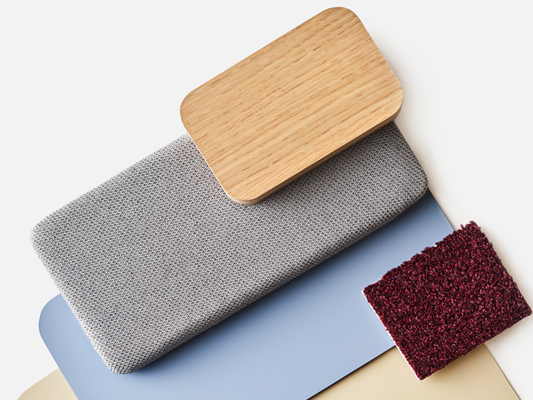
Get a quote
Find your nearest representative to hear about pricing and get a quote for your project.
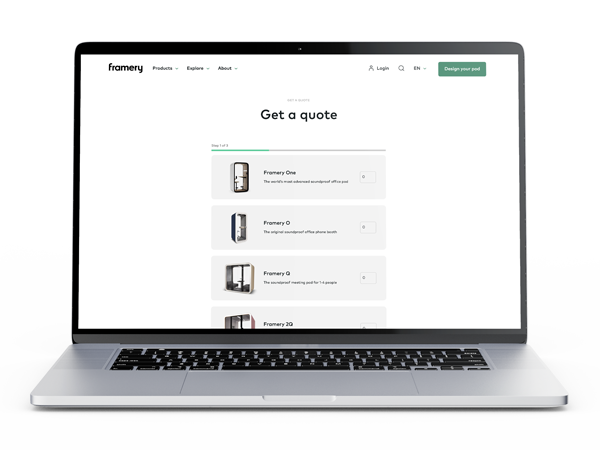
Try a pod
Visit one of our global showrooms to try any of our Framery pods for yourself.
